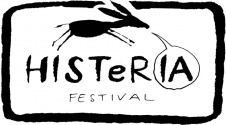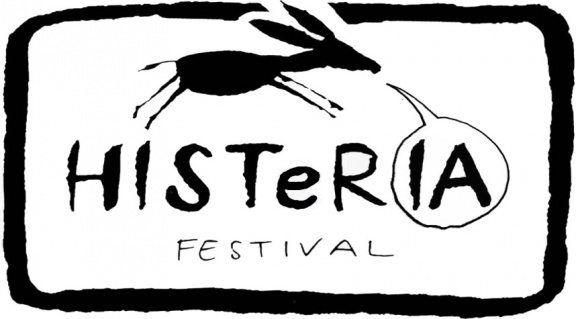Difference between revisions of "Depot:HISTeRIA Festival"
(English proofreading 1; PROOFREAD DONE) |
|||
| Line 1: | Line 1: | ||
{{Article | {{Article | ||
| − | | status = | + | | status = NIFERTIK! |
| maintainer = Anže Zorman | | maintainer = Anže Zorman | ||
}} | }} | ||
| Line 50: | Line 50: | ||
{{Teaser| | {{Teaser| | ||
| − | Though formally established and first held in [[established::2011]], [[HISTeRIA Festival]] actually dates back to 2003, when the musician, puppeteer, activist, actor and director [[Matija Solce]] started | + | Though formally established and first held in [[established::2011]], [[HISTeRIA Festival]] actually dates back to 2003, when the musician, puppeteer, activist, actor, and director [[Matija Solce]] started organising the ''Etno Histria'' workshops. They were set up as international meetings of musicians and were held on the outskirts of the Istrian (hence ''Histria'', an old name for Istria) village Gračišče. With time, the concept has grown, the workshop being also held in other countries, and it has gradually involved more and more people. |
| − | Thus was born the HISTeRIA Festival, which ambitiously incorporated a whole range of art forms under its wing and became a "folk-puppet-music-theatre site-specific event". It did retain its character of | + | Thus was born the HISTeRIA Festival, which ambitiously incorporated a whole range of art forms under its wing and became a "folk-puppet-music-theatre site-specific event". It did retain its character of a meeting of artists, but has also opened up to other people, inviting the general public as well as the local community. |
}} | }} | ||
==Concept== | ==Concept== | ||
| − | The one central idea behind the festival is of incorporating. It tries to involve people from the local village by setting up performances and workshops in the village itself; it tries to be friendly to the elderly, | + | The one central idea behind the festival is of incorporating. It tries to involve people from the local village by setting up performances and workshops in the village itself; it tries to be friendly to children, to the elderly, and to the disabled; it is international and multilingual; it encourages visitors to be involved in the realisation of the festival; and it hosts numerous types of artists and other creative spirits, who bring a variety of art forms and methods and who throughout the whole day and night allow for both mindless as well as thoughtful and reflective entertainment. |
| − | An important part of the festival is the make and the design of the | + | An important part of the festival is the make and the design of the atmosphere. It takes place before the official festival starts and is yet still a part of it, as the artists and volunteers gather for a conceptually-minded set-up of the site. Land-art, the usage of ''in situ'' materials, and also the already existing "spots", environment-friendly practices and a general feel-good aesthetics are the principles by which the location is manipulated and transformed into the festival grounds. |
==Principles== | ==Principles== | ||
| − | + | One of the underlying modes of production which allows for all of this to happen is volunteering. Not only do the organisers and their team of helpers work for free, so do the artists and others involved in the festival, and only some of the mentors for specific projects get paid for their travel expenses. This not only enables the festival to happen and draws the people that really want to be there for the social and cultural experience, it also makes it possible to invest the profits into expanding and enriching the next year's edition. | |
| − | Last but not least is the principle of sustainability. All the waste produced is recycled, the festival goes for minimal energy consumption and the participants are encouraged not to litter the | + | Last but not least is the principle of sustainability. All the waste produced is recycled, the festival goes for minimal energy consumption and the participants are encouraged not to litter the grounds, not even with cigarette stubs. |
{{YouTube|ZN8y7lBaVHg}} | {{YouTube|ZN8y7lBaVHg}} | ||
| Line 72: | Line 72: | ||
==Programme== | ==Programme== | ||
| − | The vast programme involves different performances, concerts, puppet shows, circus acts, street theatre, workshops for adults and children, poetry, exhibitions, a forest funfair and a labyrinth, film projections and more. The 2013 edition, for example, involved more than 700 artists and 150 volunteers from 25 countries. | + | The vast programme involves different performances, concerts, puppet shows, circus acts, street theatre, workshops for adults and children, poetry readings, exhibitions, a forest funfair and a labyrinth, film projections, and more. The 2013 edition, for example, involved more than 700 artists and 150 volunteers from 25 countries. |
| − | The festival also lives before and after the festival, and in the week before it happened, some of the artists were already warming up and performing in various cities and towns of Slovenia. The Etno HISTeRIA Orchestra even had a protest in front of the Centre for Foreigners just before the 2013 edition, demanding basic human rights for | + | The festival also lives before and after the festival, and in the week before it happened, some of the artists were already warming up and performing in various cities and towns of Slovenia. The Etno HISTeRIA Orchestra even had a protest in front of the Centre for Foreigners just before the 2013 edition, demanding basic human rights for detained individuals and questioning existing immigration policies. |
{{YouTube|cSxRaJboOoo}} | {{YouTube|cSxRaJboOoo}} | ||
Revision as of 10:01, 29 May 2014
Concept
The one central idea behind the festival is of incorporating. It tries to involve people from the local village by setting up performances and workshops in the village itself; it tries to be friendly to children, to the elderly, and to the disabled; it is international and multilingual; it encourages visitors to be involved in the realisation of the festival; and it hosts numerous types of artists and other creative spirits, who bring a variety of art forms and methods and who throughout the whole day and night allow for both mindless as well as thoughtful and reflective entertainment.
An important part of the festival is the make and the design of the atmosphere. It takes place before the official festival starts and is yet still a part of it, as the artists and volunteers gather for a conceptually-minded set-up of the site. Land-art, the usage of in situ materials, and also the already existing "spots", environment-friendly practices and a general feel-good aesthetics are the principles by which the location is manipulated and transformed into the festival grounds.
Principles
One of the underlying modes of production which allows for all of this to happen is volunteering. Not only do the organisers and their team of helpers work for free, so do the artists and others involved in the festival, and only some of the mentors for specific projects get paid for their travel expenses. This not only enables the festival to happen and draws the people that really want to be there for the social and cultural experience, it also makes it possible to invest the profits into expanding and enriching the next year's edition.
Last but not least is the principle of sustainability. All the waste produced is recycled, the festival goes for minimal energy consumption and the participants are encouraged not to litter the grounds, not even with cigarette stubs.
{{#oembed:https://www.youtube.com/watch?v=ZN8y7lBaVHg%7C576}}
Programme
The vast programme involves different performances, concerts, puppet shows, circus acts, street theatre, workshops for adults and children, poetry readings, exhibitions, a forest funfair and a labyrinth, film projections, and more. The 2013 edition, for example, involved more than 700 artists and 150 volunteers from 25 countries.
The festival also lives before and after the festival, and in the week before it happened, some of the artists were already warming up and performing in various cities and towns of Slovenia. The Etno HISTeRIA Orchestra even had a protest in front of the Centre for Foreigners just before the 2013 edition, demanding basic human rights for detained individuals and questioning existing immigration policies.




